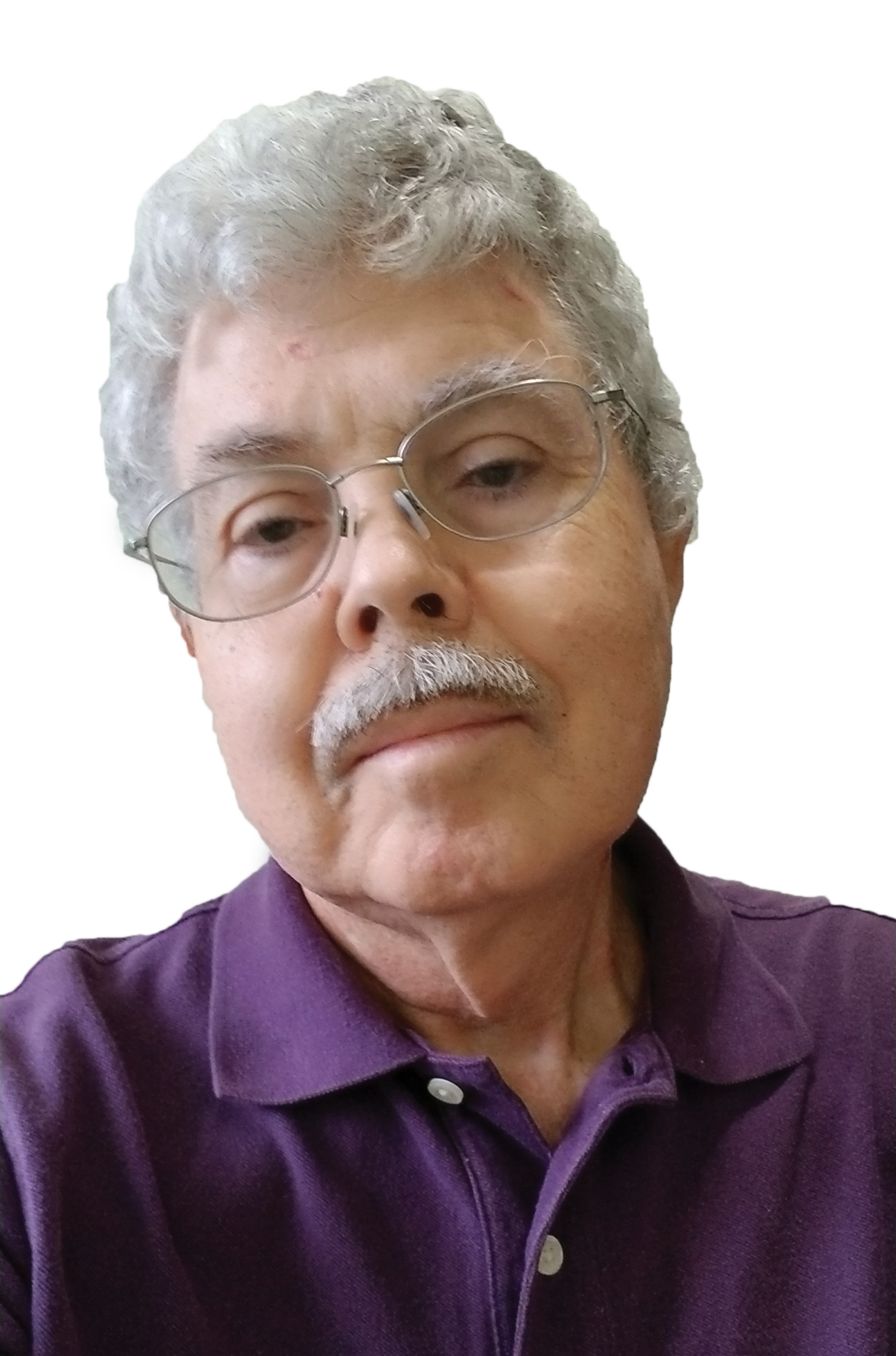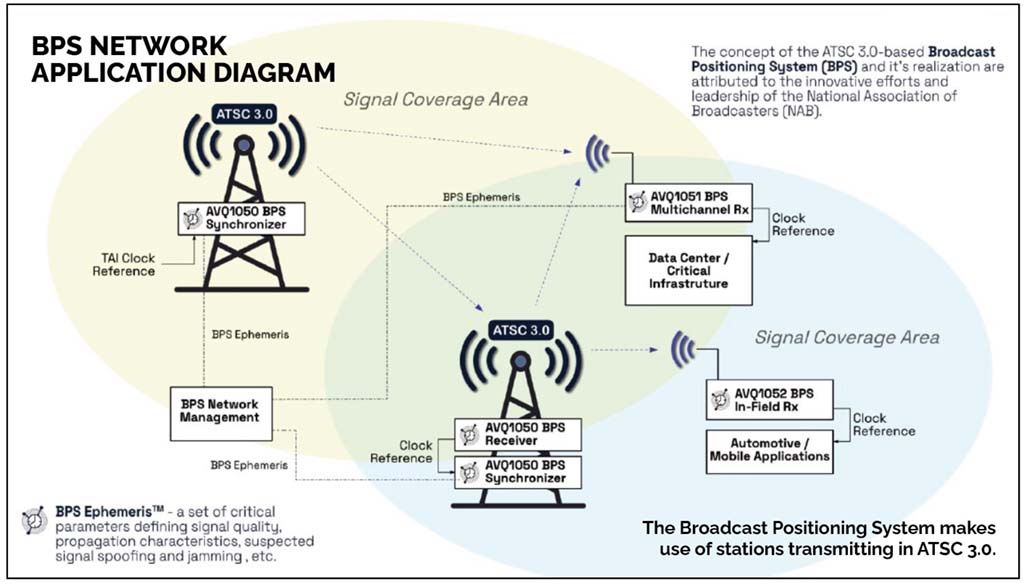BPS Could Be NextGen TV’s First Major Breakthrough
Will GPS alternative be the ‘killer app’ that drives ATSC 3.0 transition?

NAB’s February petition to the FCC to shut off ATSC 1.0 in the top 55 markets less than three years from now focused increased attention on ATSC 3.0 at the 2025 NAB Show. I found no lack of products for broadcasters looking to switch to ATSC 3.0 and, as others and I have shown in articles on previous NAB Shows, there are now several low-cost options for encoding and transmitting ATSC 3.0 signals.
However, until enough viewers have ATSC 3.0-compatible TVs and the commission relaxes rules requiring stations to continue broadcasting on ATSC 1.0 shared channels, any ATSC 1.0 shutdown will be difficult. What broadcasters have been looking for since starting ATSC 3.0 broadcasts is a “killer app” that will drive the transition to NextGen TV.
At NAB Show, I got the impression that “killer app” is the Broadcast Positioning System. It provides precise timing—and with a sufficient number of stations—accurate positioning. The FCC’s notice of inquiry on “Promoting the Development of Positioning, Navigation, and Timing [PNT] Technologies and Solutions” (WT-Docket 25-110) outlines the need for an alternative PNT system.
Secure System
BPS is an alternative PNT system using ATSC 3.0 stations. One advantage of BPS is that it is very resistant to jamming or spoofing (substituting valid data with inaccurate data) due to the high power, large number and wide frequency range of TV transmitters (VHF and UHF). A nationwide BPS depends on nationwide ATSC 3.0 coverage. If the government wants BPS, broadcasters hope it will encourage the government to provide regulatory and perhaps financial support for the ATSC 3.0 transition needed for BPS.
Is BPS a good enough alternative? In Denver, the National Institute of Standards and Technology (NIST), TV station KWGN and the NAB worked together to test BPS reliability and accuracy. The results were presented in “Field Test of ATSC 3.0/BPS Precise Time Distribution” at the Broadcast Engineering and IT Conference at the NAB Show by Jeff Sherman, supervisory physicist at NIST.
The test found that BPS time was within plus or minus 10 nanoseconds of the UTC (NIST) standard time, except for a sudden time shift of approximately -25 nanoseconds, which the presentation said “is likely related to known operator maintenance activity that involved lower transmitter power and/or a possible change to undetermined interference in the NLOS [non-line-of-sight] propagation of KWGN to NIST Boulder.”
The paper, available in the NAB 2025 BEIT Conference Proceedings, includes details on testing and comparisons to GPS accuracy, with the results of the tests showing BPS comparable to GPS L1 band. Additional information is available in the paper “Time Transfer Performance of the Broadcast Positioning System.”
The professional video industry's #1 source for news, trends and product and tech information. Sign up below.
How difficult is it to deploy BPS? For a BPS station to provide accurate time, it requires its own traceable time standard. These are expensive, but two alternatives were covered at the show.
Follow the ‘Leader’
One option uses a station with a traceable time standard as a “leader” other stations, or “followers,” can use as a reference. A test setup, using stations WHUT in Washington, D.C., (the “leader”) and WNUV Baltimore (the “follower”), showed how this works. Details on the system and its configuration were provided in “BPS Mesh Network Initial Deployment Report,” a BEIT presentation by Mark Corl, senior vice president, emergent technology, Triveni Digital.
The other time reference, demonstrated in an NAB PILOT exhibit with Sinclair’s ATSC 3.0 station KVCW, used an eLORAN station as the reference. The NAB’s comments in FCC WT Docket No. 25-110 pointed out that BPS could be part of a “system of systems.” The eLORAN demonstration is an example of one system providing a reference for BPS; BPS could also provide a reference for other timing systems, such as the networking Precision Time Protocol (PTP).
For BPS to be a reliable backup for GPS, many more stations will have to transmit it. Monitoring will be required to ensure BPS stations are transmitting accurate time. A station transmitting BPS data will need to add a robust PLP (QPSK with 2/15 coding) to carry the broadcast time information. Less than 10 kbps is required, so the impact on total channel capacity is minimal.
Additional equipment is required to add the time data and adjust the timing of the transmitted signal. Avateq outlined a basic BPS configuration at Rohde & Schwarz’s tech talk at NAB Show. “BPS Network Application Diagram” from this presentation shows the components in a leaderfollower BPS configuration. At this time, Avateq and Triveni are the only suppliers of BPS-compatible equipment, and only two transmitter companies—GatesAir and Rohde & Schwarz—have exciters that work with BPS. I talked with other gateway and transmitter vendors at NAB Show and got the impression that if a market develops for BPS products, they will support it.
During the session Q&A, the cost to add BPS to a station was quoted as “about $200,000.” That wasn’t broken down, but I expect the traceable time reference or stable holdover reference is a large part of this.
Keeping Track of Time Is Crucial
Will BPS work with a single frequency network of transmitters (SFN) or with translators? BPS depends not only on precise time transmission, but transmission of the precise location of the BPS station. That’s necessary to account for how long it takes the time transmitted from the station to reach the BPS receiver. A 6-meter error in distance will result in an error of approximately 20 nanoseconds.
Obviously, timing could be a problem if the original BPS station’s time is transmitted on multiple stations in an SFN or via translators. The good news is the ATSC 3.0 standard allows for each transmitter in an SFN to have its own identifier that specifies its location. Each translator or transmitter with BPS in an SFN will require a traceable reference time source. SFNs today rely on GPS for synchronizing transmission frequency and time, but if BPS is to be a backup for GPS, another reference will be needed. Since the BPS data will be transmitted in a very robust PLP, signals from other BPS stations should be available as a reference.
The added complexity for SFNs and translators needs to be considered when calculating the cost to broadcasters for implementing BPS. While having BPS on translators would provide coverage in remote areas, in the end it may be simpler to strip BPS data from the translator’s signal, especially if robust streams from distant full-power stations are receivable in those areas.
Receivers will have to identify individual transmitters on the same channel, whether transmitters in an SFN or other co-channel stations. With a BPS PLP signal-to-noise ratio of -5 dB, there will be locations where two or more stations’ coverage overlaps, so this will be important. When multiple transmitters are received on the same channel, Avateq’s receiver uses the signal that arrives first for the time reference.
Please share your comments at dlung@transmitter.com.
I’m sure any remaining technical issues will be resolved and, if there is government and broadcaster support for BPS, equipment will be available from multiple vendors.
We’re seeing increasing interest in data transmission as a potential revenue source (a “broadcast CDN”). Where does BPS fit in? Can broadcasters charge BPS users for the service? During one of the NAB sessions on BPS, it was estimated that loss of GPS for a period of 90 days would result in costs of over $1 billion per day. Will power companies, financial institutions and other critical users that depend on a precision time reference, including the government, be willing to pay broadcasters to transmit BPS as insurance against GPS loss?
Can we count on individual broadcasters to successfully deploy BPS? Larger station groups have the resources to do this, but some sort of a prepackaged solution that can be installed, maintained and remotely monitored at smaller stations will be necessary. Engineers have done a great job developing the technology that enables BPS. Let’s hope the government and business lets us take advantage of it.
In my next column, I’ll cover other topics from the 2025 NAB Show as well as some testing I did with a $59 (as this was written) USB ATSC 3.0 receiver that can plug into an Android phone while in Las Vegas. As always, your comments are welcome!

Doug Lung is one of America's foremost authorities on broadcast RF technology. As vice president of Broadcast Technology for NBCUniversal Local, H. Douglas Lung leads NBC and Telemundo-owned stations’ RF and transmission affairs, including microwave, radars, satellite uplinks, and FCC technical filings. Beginning his career in 1976 at KSCI in Los Angeles, Lung has nearly 50 years of experience in broadcast television engineering. Beginning in 1985, he led the engineering department for what was to become the Telemundo network and station group, assisting in the design, construction and installation of the company’s broadcast and cable facilities. Other projects include work on the launch of Hawaii’s first UHF TV station, the rollout and testing of the ATSC mobile-handheld standard, and software development related to the incentive auction TV spectrum repack. A longtime columnist for TV Technology, Doug is also a regular contributor to IEEE Broadcast Technology. He is the recipient of the 2023 NAB Television Engineering Award. He also received a Tech Leadership Award from TV Tech publisher Future plc in 2021 and is a member of the IEEE Broadcast Technology Society and the Society of Broadcast Engineers.

